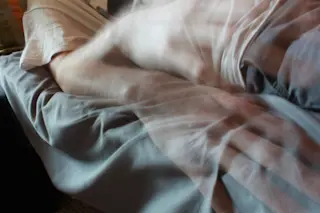What’s the News: Humans are eerily good at sifting the visual wheat from the chaff—just think of our penchant for word searches, Easter egg hunts, and lushly animated first-person shooters. But how good are we really? To test the limits of these abilities, in a recent study neuroscientists gave subjects extremely difficult, high-speed Where’s Waldo-type search tasks studded with red herrings. But again and again, subjects found what they were looking for, leading the team to report that humans operate at a near-optimal level when it comes to visual searches—a skill that likely came in handy in our evolutionary history. How the Heck:
For a fraction of a second, a cluster of short lines randomly colored gray or black and set at various angles, called “distracters,” flashed before subjects’ eyes. Half of the time, a single line whose orientation didn’t change across images was hidden among them, and subjects indicated ...













